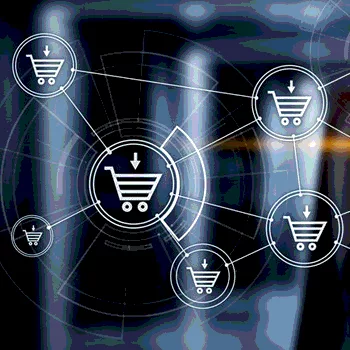Smarter Approaches to Ensuring Food Safety in the Global E-Commerce Market

Nowadays, most of the foods we eat in developed countries are grown and manufactured in developing countries. For example, about 80 percent of food consumed in the UK is imported from other countries, including developing countries. In the U.S., more than 50 percent of fresh fruit, 30 percent of vegetables, about 95 percent of seafood, and more than 90 percent of spices eaten by consumers are imported, mostly from developing countries. Foods are also now being delivered differently through e-commerce (EC)/online shopping/home delivery. EC is an innovative and digital (nontraditional) channel to market for food that has extended the last mile of delivery to the consumers. EC was adopted by the World Trade Organization in 1998.
EC provides consumers with greater choice and convenience as well as access to food products that they could not access through traditional (physical retail) trade. EC is also suitable for a highly fragmented food supply chain. It can bring huge opportunities, especially for small and medium-sized enterprises (SMEs), by linking them directly with agricultural input markets and consumers. EC of food, including perishable foods (e.g., fresh produce, meat, poultry, seafood, cheese, prepared meals), has recently increased dramatically. EC can increase the farm gate price by 20–30 percent because of the fewer steps between SMEs and consumers. Also, EC can directly connect SMEs to the global market, allowing them to extend their sales beyond their limited geographic boundaries.[1]
EC (online ordering) can even be cheaper. For example, in China, it’s up to 80 percent cheaper to have food delivered (using apps/smartphones) than the price on the restaurant’s menu. Therefore, online ordering has become a favorable way for people of all ages, especially millennials (due to the convenience and easy accessibility), to get their food/meals around the globe. In 2018, the amount spent on online food delivery was estimated at $82 billion, and it is expected to reach $365 billion by 2030.
Transportation (last mile delivery) plays an important part in EC. Some food companies use their own in-house food delivery systems and others use third-party delivery services to deliver food to customers. For example, there are about 10 online food delivery companies in North America or Europe (e.g., Grubhub, Deliveroo, Delivery Hero, Doordash, Foodpanda, Uber Eats, Just Eat, etc.). Asia (e.g., Meituan, Ele.me, Alibaba, etc.) accounts for an approximate 55 percent share of the global online food delivery market. Also, some companies (e.g., Starship, Kiwibot, Robomart, Teleretail, Amazon Scout) are starting to use robots autonomously to deliver food to customers. These robotic services have been tested in several university campuses across Germany, UK, and the U.S.
EC can also present unprecedented food safety risks and challenges. For example, in a shared study done by Rutgers and Tennessee State University,[2, 3] 169 meal kits (including 271 meats, seafood, game, and poultry items) were ordered to examine the quality of home-delivered meals. The study revealed that products were likely to be left outside for a long time (> 8 hours; perishable food should not be kept at the ambient temperature for more than 2 hours) before they are handled properly (refrigerated). About 5 percent only required a signature upon delivery. Only 42 percent of the food delivery companies provide kinds of food safety information (the information is hard to find and maybe inaccurate; for example, “cool to the touch,” which has been recommended by one of the vendors, is not a food safety standard) on their websites. Some of the products have high surface temperatures (up to 75 °F). About 47 percent of the food items ordered had more than 40 °F when they arrived. Packaging materials and labels were not appropriate.
The responsibility of ensuring food safety must be shared by the public authorities, the food industry, and consumers. Smart steps must be taken by international and local food safety authorities and trade organizations to address safety issues involved in the changing world of food production and delivery. Several countries are leading in this space. For example, the EU is leading a food safety initiative called “Smarter Rules for Safer Food.” Australia is leading a new food safety initiative called “Dairy RegTech 2022.” And the U.S. Food and Drug Administration is leading a new food safety initiative called “New Era of Smarter Food Safety,”[4] that builds on the Food Safety Modernization Act. The initiative is focusing on the following to address safety issues involved in the changing world of food production and delivery:
• Tech-enabled traceability, foodborne outbreak response, and outbreak recall communication throughout the food supply chain.
• Use of smarter tools (e.g., knowledge from trace back, data streams, and tools for rapidly analyzing data) to prevent contamination and develop innovative approaches to inspection and compliance
• Develop approaches to ensure food safety in both new (e-commerce/home delivery) and traditional (retail food establishments) food systems.
• Promote food safety culture and behavior change throughout the food system (among authorities’ staff, food industry, and consumers)
• Identify an appropriate food safety standard of food in the last mile (e.g., packaging materials, temperature, food labeling, traceability, develop trusted distribution channels, etc.)
Barakat Mahmoud, Ph.D., is an international food safety expert with 30 years of experience in food safety. He has provided technical assistance in food safety in several developing countries in Africa, Asia, Central America, the Middle East, and the Caribbean.
References
1. www.fao.org/fao-who-codexalimentarius/news-and-events/news-details/en/c/1202879/.
2. www.fightbac.org/wp-content/uploads/2015/08/HALLMAN-Ordered-Online.pdf.
3. humanecology.rutgers.edu/news2.asp?nid=85.
4. www.fda.gov/food/food-industry/new-era-smarter-food-safety.
Looking for quick answers on food safety topics?
Try Ask FSM, our new smart AI search tool.
Ask FSM →








